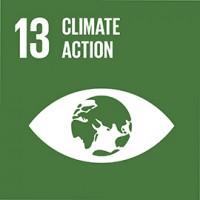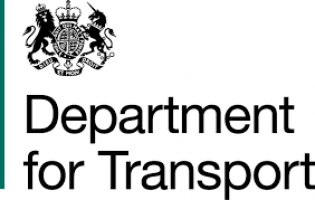
Research: International action to reduce emissions from aviation
Informing international standards and agreements to reduce emissions from aircraft by modelling the climate impact of aviation.
Summary
Research summary
Our research is shaping global measures to mitigate aviation’s climate change effects.
We combined data on aircraft engine emissions with models of atmospheric chemistry and physics to understand the impact of carbon dioxide (CO2), non-CO2 and soot emissions.
More than half of aviation’s total climate impact comes from non-CO2 emissions, our research showed. Most of these emissions are of engine exhaust particulate matter (soot), which forms contrail cirrus cloud that traps heat in the atmosphere.
We have also shown the benefit of alternative fuels, which can reduce CO2 and soot emissions, and so avoid some of the warming effects of contrail cirrus.
Our modelling also suggests that the aviation industry should focus on reducing CO2, rather than nitrogen oxide (NOx) emissions. Reducing NOx emissions would have long-term economic costs for industry, without clear benefits - and mitigation measures may lead to worse climate impact.
Our evidence suggests the EU Emissions Trade Scheme for aviation focus solely on CO2 emissions because NOx climate effects are still insufficiently understood.
Statistic
Impact
Research impact
Our analyses and scenario modelling for the International Civil Aviation Organization (ICAO) confirm that both technological and market-based approaches can reduce CO2 emissions and climate impacts.
These studies underpin the UK’s position and technical specifications on international aviation policy, regulation and standards.
Prof David Lee and Dr Bethan Owen help lead the technical working groups within ICAO.
Their emissions modelling informed the Carbon Offsetting and Reduction Scheme for International Aviation (CORSIA), which is used by airline operators from more than 100 countries to offset CO2 emissions.
Our research also helped shape a new CO2 emissions standard for new aircraft designs. The standard is legally enforceable in ICAO nation states and requires the reduction of aircraft emissions. It is estimated that this standard will save around 785 megatonnes of CO2 between 2020 and 2040 - around 2.5% of aviation emissions over this period.
And our research into non-volatile particulate emissions (soot) from engines contributed to a new ICAO regulation on exhaust emissions for all new aircraft engines from 2023. It is expected to reduce landing and take off emissions by about 20 to 30% from 2025 to 2040, which will help curb high altitude contrail cirrus that trap heat in the atmosphere.
We have published over 50 peer-reviewed scientific papers, contributed to five major climate assessments as lead authors, and produced confidential technical papers within ICAO.
Quote
Manchester Met has provided essential advice, analysis, research and scientific leadership that has led to the agreement in ICAO of the first carbon dioxide emissions standard for international aviation - the first scientifically-based, non-volatile particulate matter standards for the sector and the first global market-based measure to address carbon dioxide emissions in any single sector.
Outputs
Sustainable development goals

Climate action
Promoting mechanisms for raising capacity for effective climate change-related planning and management

Partnership for the goals
Strengthen the means of implementation and revitalize the global partnership for sustainable development.
Research outputs
-
Lee, DS, Fahey, DW, Skowron, A, Allen, MR, Burkhardt, U, Chen, Q, Doherty, SJ, Freeman, S, Forster, PM, Fuglestvedt, J, Gettelman, A, De León, RR, Lim, LL, Lund, MT, Millar, RJ, Owen, B, Penner, JE, Pitari, G, Prather, MJ, Sausen, R and Wilcox, LJ (2020) The contribution of global aviation to anthropogenic climate forcing for 2000 to 2018. Atmospheric Environment 244:117834
-
Agarwal, A, Speth, R, Fritz, T, Jacob, D, Rindlisbacher, T, Iovinelli, R, Owen, B, Miake-Lye, R, Sabnis, J and Barrett, S (2018) The SCOPE11 method for estimating aircraft black carbon mass and particle number emissions. Environmental Science and Technology 53:1364-1373.
-
Freeman, SJ, Lee, D, Lim, L, Skowron, A, Rodriguez and De Leon R, (2018) Trading off aircraft fuel burn and NOx emissions for optimal climate policy. Environmental Science and Technology 52(5):2498-2505
-
Lee, DS, Fahey, DW, Forster, PM, Newton, PJ, Wit, RCN, Lim, LL, Owen, B and Sausen, R (2009) Aviation and global climate change in the 21st century. Atmospheric Environment, 43:3520-3537
-
Wit, RCN, Boon, BH, van Velzen, A, Cames, M, Deuber, O and Lee, DS (2005) Giving wings to emission trading. Inclusion of aviation under the European emission trading system (ETS): design and impacts CE-Delft, No. ENC.C.2/ETU/2004/0074r, The Netherlands
Team
Research team
Lead researchers
Funding
Funding

EPSRC

European Commission Horizon 2020

Department for Transport

Higher Education Innovation Fund
Contacts
Contact us
For general enquiries about our Net Zero and Low Carbon Futures research group, you can contact its lead Dr Paul Hooper.
